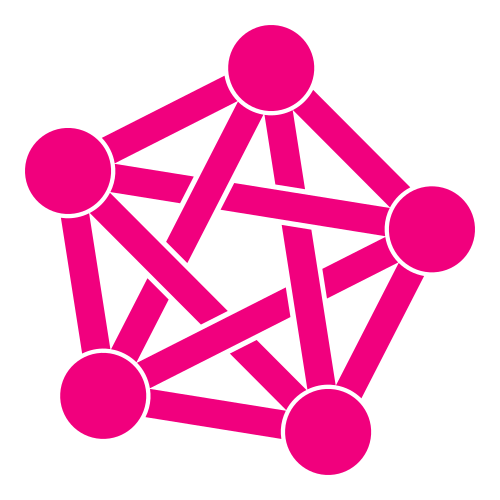I recently started thinking again about the Social knowledge fabrics discussion, and it seems to me that one of the biggest obstacles for fedi to become one is the following. The things we refer to as “threads” are actually “branches of a tree”. You have a trunk, basically the whole fedi, each post is a branch, each branch can itself ramify into branches, but all the branches stay independent.
It would be useful if a discussion branch was not only shaped like a thread, but also had the usefulness of one : sewing, or tying together different discussion topics. Sometimes I think again about an old discussion when participating in a new one, and so I cite it. But this message is still fundamentally part of the new discussion, while the newly established link should be of equal interest to participants of both threads.
What we miss is for that message to be part of both conversations, or a clear way to automatically signify to both threads that something new happens. Of course, this can be done by hand, writing a comment in each cited branch to point to the new one. But we won’t remeber to do that everytime, or we will not want to “necrobump”, or we just don’t want to make the extra effort. So it would be interesting if the relations were established automatically. For example the way I proposed for Friendica’s quote-shares in the linked URL, or the way GitHub handles issue that cite each other.
Maybe two old topics will come to know about each other that way, effectively being sewed by the new thread.
Sounds a bit like the backlinks on mention in the IndieWeb standard.
Indeed backlinks is what this is about, thanks for compensating for my lack of education on webstandards 😀
AFAIU, webmention is specifically the thing I was asking about on Friendica, both other forms are probably worth thinking about as well. In particular, rel-me seems to be the one that renders best this idea that threads split before joining back together through a common comment.
I like the idea you described. Currently we have become so used to Microblogging (twitter-, mastodon-like) functionality.
This functionality is also done nicely in Discourse forums, where you can Quote selected text from earlier in the thread. You can expand the quote inline or jump to the comment post itself. And when you paste such quote in a new topic it creates a cross-reference, and you see a backlink in the original topic.
Also the Linked Data nature of the underlying data would make it possible to create all different kinds of associations, not just a plain cross-ref link.
Let me just link my reply that didn’t make it through to
lemmy.off-topic : Funny how nearly everytime I write a comment about how great it is that we can federate, said comment does not federate with the place where I wanted to send the message. I now seem to understand that it is because I tend to use hashtags in those ones.
You are right, this is a problem in Lemmy. Just fixed it.
That’s wonderful ! Many thanks !
Federation seems to work less well for me now than it did when Lemmy first launched it in their release. Theoretically another comment needs to appear below yours, which is just tooted from mastodon.
This is a problem with Mastodon, as i described here. It also existed in the initial Lemmy release, but back then you generally replied to comments from lemmy.ml users in lemmy.ml communities, so everything looked fine.
Indeed I see it from here on Nerdica but it does not seem to appear on Lemmy. I also did comment a bit from Framapiaf before trying out Friendica, and I had more often that kind of problem too.
I often see @heluecht participating in !lemmy_support, so that’s probably correlated !
Also the Linked Data nature of the underlying data would make it possible to create all different kinds of associations, not just a plain cross-ref link.
This seems interesting, but I must say I don’t directly see an application of this in the context of microblogging/commenting. Maybe you can inspire us here? 😀
Instead of just a link you can attach more metadata. Like your link is an ‘academic citation’ or an ‘attribution’ and give reference to the license. Or provide information that allows you create something like the popup dialogs that appear on Wikipedia links, with an image to it, etc.
Note that on #Friendica we can quote-share, and we can also do it in comments. As I discovered recently by playing in the below post
Do your commenting tests here.
While posting tests can obsviously be made on this community without further precision, commenting requires a post to comment on. This is what this post is for.
these make it through to #Lemmy when we do it in a comment, but not in a top-level post (which is already a great start !). So, in Friendica, all that’s missing is the backlink !
Also the Linked Data nature of the underlying data would make it possible to create all different kinds of associations, not just a plain cross-ref link.
This seems interesting, but I must say I don’t directly see an application of this in the context of microblogging/commenting. Maybe you can inspire us here? 😀
This seems interesting, but I must say I don’t directly see an application of this in the context of microblogging/commenting. Maybe you can inspire us here? 😀
I already gave some follow-up in this other comment. In general when brainstorming use cases it help to think what current Microblogging offers: basically an ordered timeline (stream) of sticky notes (
as:Note), and selecting a note renders a hierarchical discussion tree. What if there were more semantically meaningful objects in the stream, and non-hierarchical relationships (making it a true graph)?An example. Suppose a more academic setting for microblogging e.g. supported by scholar.social. I’d be making some claims in a toot and you respond with “References, please!”. I could respond with another sticky notes with some URL’s. But I might also respond by creating a
ac:Citationinstead, whose widget UI is decicated of making proper citations. Going further, instead of you sending me a “References, please!” sticky note, you might send me anInvite{ac:Citation}and my response mightUpdate{Note}my original toot and add citation cross-reference. Clients that don’t support the message exchange in the Academics domain might still see a fallback to regular sticky notes like before.Next to inviting citations, it would also be nice for everyone to be able to add citations. Make it more of a collaborative effort than someone’s time line.
Would it need a way to make clear we are really interested in the citation? I feel that most cases people ask for citations, they mean to say diplomatically that the claim is nonsense.
Would it need a way to make clear we are really interested in the citation? I feel that most cases people ask for citations, they mean to say diplomatically that the claim is nonsense.
The problem is that if such tool comes to exisyence, the people who want to politely say bullshit will use that one out of politeness
Yes, you are right. My example served purely to present a use case where richer semantics might make sense in a microblogging context. In an actual app you’d model the domain first and drill down to concrete vocabulary formats from there.
you might send me an Invite{ac:Citation}
Oh, like the “ref needed” box on Wikipedia? Academic citation was also the main example I had in mind when first asking about backlinks, but I didn’t see the need for an extra relation, thanks for that !
Quite similarly I think, there could be
Like{ac:citation}, that can be used in particular by the author of the cited medium to show whether or not they endorse the way their work is referred toYes, exactly. Though in those extensions there should be careful thought about the semantics that are used in the vocabulary definition. So
Likemay work, but you might consider havingac:Endorse{ac:Citation}instead. Especially if there’s a fallback to show this in regular microblogging timelines you’d have random fedizens liking, and accredited academics endorsing.Is there a semantic difference between liking and endorsing from the sender’s point of view? From your comment it seems to me that the only differences are in the nature of the sender, and how much they are trusted by the receiver. In this case, it may as well be the receiver’s job to filter likes according to who sends them and treat them accordingly.
But yeah I get your general point that vacabulary should not be chosen too fast
PS. I have since transferred the idea of Social Knowledge Fabrics to the Social Coding Movement co-shared community forum: Semmy: Social Knowledge Fabrics. I added a cross-reference to this topic. (Note that I intend to bring Fediverse Futures itself under the Social Coding umbrella)
The things we refer to as “threads” are actually “branches of a tree”. You have a trunk, basically the whole fedi, each post is a branch, each branch can itself ramify into branches, but all the branches stay independent.
Trees are hierarchical. It assumes a single parent. Threads are more like, hear me out, hyperlinks of discussions, almost like rungs on a spiderweb, multiply interconnected.
If we were to properly organize these structures and make them interactive, we could build a world-spanning spiderweb. /s
Sorry, I’m not fully understanding the sarcasm. Are you making fun of me for the sewing analogy? For making a post about such basic thing as backlinks? (I mean I’m not claiming I’m discovering that idea, just that I think it would be nice to have it on fedi)
Definitely not. Sewing is actually better than web which is way too geometrically rigid. I was just using humor to point out that things that are often thought of as shortcomings in higher layer protocols are because they ignore the lower layers and keep trying to add new layers on top to fix it.






